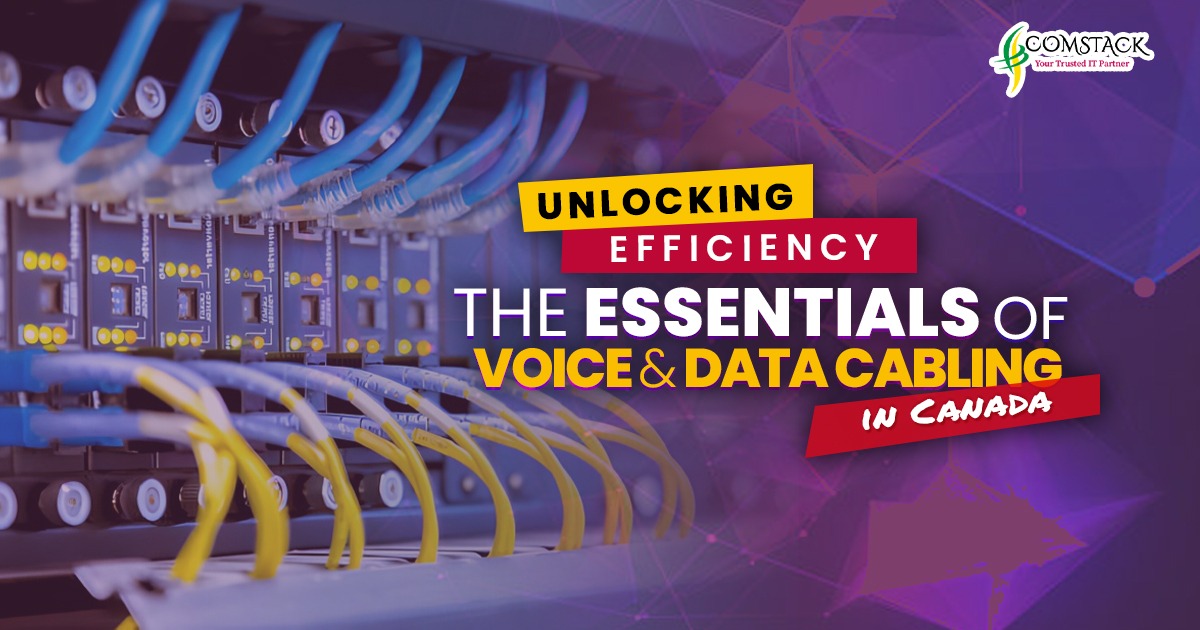In the intricate web of modern communication systems, voice and data cabling serve as the fundamental arteries, ensuring seamless connectivity and efficient transmission of information. Whether you’re setting up a new office space or revamping an existing infrastructure, comprehending the nuances of voice and data cabling is paramount to optimizing your network performance.
Demystifying Voice Cabling in Canada
Voice cabling forms the backbone of traditional telecommunication systems, facilitating clear and reliable audio transmission across various channels. In Canada, where technological advancements are deeply ingrained in the fabric of society, leveraging robust voice cabling infrastructure is crucial for businesses to stay competitive.
Compliance and Regulations
When embarking on voice cabling in Canada, adherence to industry regulations and standards is non-negotiable. Familiarize yourself with codes such as the Canadian Electrical Code (CEC) and Telecommunications Industry Association (TIA) standards to ensure compliance and mitigate potential liabilities.
Future-Proofing Strategies
In an era characterized by rapid technological evolution, future-proofing your voice cabling infrastructure is imperative. Invest in high-quality, industry-standard components and consider scalability factors to accommodate future expansion and emerging technologies seamlessly.
Professional Installation
While DIY endeavors may seem tempting, entrusting voice cabling installation to certified professionals is a prudent decision. Qualified technicians possess the expertise and specialized tools necessary to execute installations efficiently while minimizing disruptions to daily operations.
Navigating the Terrain of Data Cabling
In the digital landscape, data cabling serves as the lifeline, facilitating the swift and secure transfer of digital information. From network servers to individual workstations, optimizing data cabling infrastructure is essential for fostering productivity and connectivity.
Bandwidth Considerations
With the proliferation of bandwidth-intensive applications and cloud-based services, bandwidth considerations are paramount when designing data cabling solutions. Evaluate your current and anticipated bandwidth requirements meticulously to determine the appropriate cabling specifications and configurations. You can know also CAT 6 cabling in Torrento, Canada.
Cable Management Best Practices
Effective cable management not only enhances aesthetic appeal but also streamlines troubleshooting and maintenance efforts. Implement cable management solutions such as cable trays, racks, and labels to organize cables systematically and minimize the risk of signal interference or damage.
Performance Testing and Maintenance
Regular performance testing and maintenance are integral components of sustaining optimal data cabling functionality. Implement structured testing procedures and schedule routine maintenance checks to identify and rectify potential issues proactively, safeguarding against downtime and performance degradation.
Tips from the advantages- what facts you need to be aware of
Invest in Quality Components
Cutting corners on cabling components may lead to compromised performance and reliability. Prioritize investments in high-quality cables, connectors, and termination equipment to ensure longevity and minimize the risk of system failures or data breaches.
Plan for Scalability
Anticipate future growth and technological advancements when designing your cabling infrastructure. Incorporate scalability features such as ample conduit space and modular components to accommodate evolving business needs seamlessly.
Embrace Innovation
Stay abreast of emerging technologies and industry trends to optimize your voice and data cabling infrastructure continually. Explore innovations such as fiber-optic cabling and Power over Ethernet (PoE) solutions to enhance performance, efficiency, and cost-effectiveness.
Conclusion
Mastering the intricacies of voice and data cabling is essential for organizations seeking to harness the full potential of their communication networks. By adhering to industry standards, embracing scalability, and leveraging professional expertise, businesses can lay the foundation for robust, future-proofed cabling infrastructure that drives efficiency and innovation.
Remember, your cabling infrastructure is the lifeline of your communication network—invest wisely, plan meticulously, and adapt strategically to unlock unparalleled connectivity and productivity.
This blog provides comprehensive insights into data and voice cabling in Canada, covering essential aspects such as compliance, future-proofing strategies, and expert tips. Whether you’re a seasoned IT professional or a business owner navigating the complexities of infrastructure deployment, this guide equips you with the knowledge and resources necessary to optimize your cabling infrastructure effectively.
To know more Internet cabling click: https://en.wikipedia.org/wiki/Networking_cable
Voice cabling refers to the physical infrastructure designed to transmit analog or digital voice signals within a communication network. It involves the installation of cables, connectors, and other components to facilitate clear and reliable audio transmission, supporting functions such as telephony and intercom systems
The three primary types of cabling are twisted pair, coaxial, and fiber optic. Twisted pair cables, comprising twisted pairs of copper wires, are commonly used for telephone and Ethernet connections. Coaxial cables consist of a central conductor surrounded by insulation and a shield, while fiber optic cables use light signals for high-speed data transmission.


